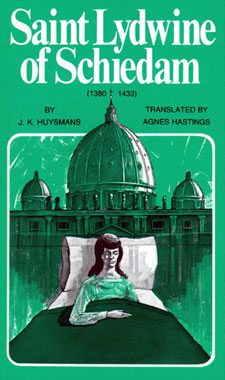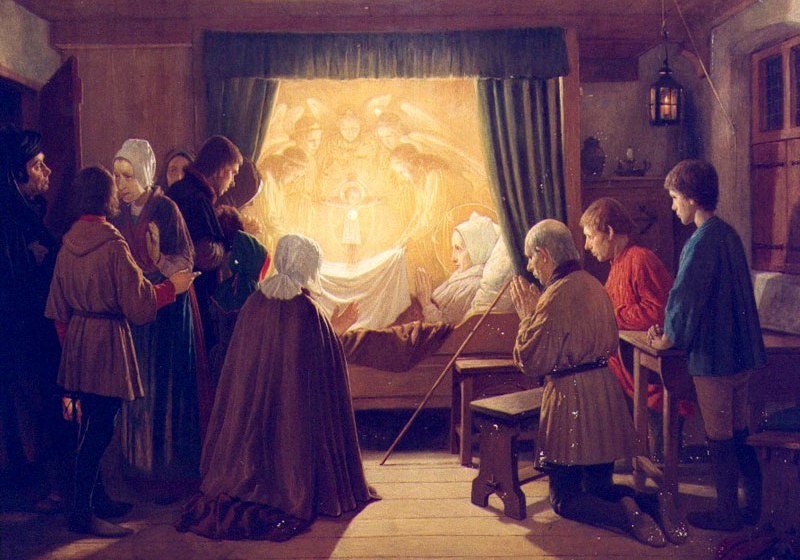
“Long live the sacred cross: long live suffering!”
How foreign these words of Saint Veronica Giulani are to our modern ears. Tell-tale examples like widespread abortion and drug use are unnecessary to see that contemporary society will do anything to avoid suffering. However, in turning its back on suffering, it has also turned its back on Our Lord Jesus Christ.
Changing the Course of History
As Catholics, we know that suffering is a great treasure and a most effective means of union with Christ. Our Lord taught us, “If any man will come after me, let him deny himself, and take up his cross, and follow me” (Matt. 16:24).
In addition to granting personal union with Christ, suffering can also change history. In His Infinite Justice, God must reward every sacrifice suffered for His sake. When He wishes to give the world more graces than it deserves, He often calls special souls to suffer and thus “buy” these graces. Thus He can show an overabundance of mercy, without contradicting justice.
Therefore, there is a delicate economy between sacrifice and grace, whereby the suffering of one soul can determine the action of God and so alter history. Author William Bush narrates a poignant example of this in his book, To Quell the Terror. He shows how the martyrdom of sixteen Carmelite nuns coincided perfectly with the fall of Robespierre and the end of the Reign of Terror, concluding that the expiatory sacrifice of those nuns, freed France from the heinous throes of the French Revolution.
 Learn All About the Prophecies of Our Lady of Good Success About Our Times
Learn All About the Prophecies of Our Lady of Good Success About Our Times
Sometimes, God calls special souls to dedicate their entire lives to suffering. Often nameless, these expiatory victims affect government policy, topple kings, save souls and even avert chastisements, without ever leaving their beds or monasteries.
God rewards them for their suffering. Accepting the most terrifying pains, their submission brings them a joy, comparable only to the elect in heaven. “My life is a delicious Purgatory, where the body suffers and the soul rejoices,” said Marcelline Pauper, an expiatory victim of the eighteenth century.

Throughout the history of the Church, the list of expiatory victims is surprisingly long. The story of one exemplary member of this list was recounted by the illustrious nineteenth century author Joris Karl Huysmans in his book, Saint Lydwine of Shiedam, republished by Tan books.
Saint Lydwine
In 1380, Saint Lydwine was born in the small town of Shiedam in Holland, when all of Christendom groaned under the weight and confusion of the Great Schism. At 15, while ice-skating with her friends, she broke a rib, forcing her into a bed she would never leave.
Over the next 38 years, she would frightfully endure every known ailment of the time with the exception of leprosy. Swollen with liquids, her stomach would expand to such an extent that she appeared to be with child; intolerably sensitive, her eyes would shed blood whenever they were struck by light and transfixed by agony, she bore the side wound of Christ’s passion through the stigmata.
Although in the onset of her sickness, she was given to despair, and rejected this torrent of sufferings, she soon became inflamed with an intense love of God that no pain could extinguish. Then, crippled by the agony of her infirmities, she donned a hair shirt and took to an insufficiently thin mattress of straw strewn on the floor, to augment her already unspeakable pain.
Perhaps the worst of all her sufferings was the persecution she suffered from some members of the clergy, who denied her the Sacraments. One priest, Dom André, even calumniated her, and later met an untimely end.
Prophetically, Saint Lydwine warned Dom André of his impending death and threatened that if he did not repent of his habit of stealing and make proper restitution, he would be damned. With this, he went into fit of rage and “died with foam on his lips in an excess of anger against the saint.”
Compensating her many sufferings, Saint Lydwine was graced with a heavily mystical spiritual life. She was often taken to the earthly paradise, and held colloquies with Our Lord, Our Lady, the angels and saints.
By the time of her death, her body bore all the repugnant signs of a lifetime of suffering. However, upon dying, she was miraculously restored to all the former youth and beauty she possessed before her illnesses.

The most enlightening part of the book comes at the beginning, where Mr. Huysmans applies the sufferings of Saint Lydwine to the moral crisis aborning at the time. He shows that despite some technical advances, the Renaissance was essentially the rebirth of paganism. He then described the reactionary legion of men called by Divine Providence to fight against the errors of this new historical epoch. He cleverly divided this legion into three levels, each with a specific function.
The first consisted of the Franciscans and preaching orders who evangelized and confessed the Faith. The next was made up of the cloistered orders, whose prayers insured the success of the first level. Saint Lydwine belonged to the last level, where those suffering souls, seemingly detached from events of the time, bought the graces from God to decide the course of history.
Saint Lydwine and Our Times
Immersed in the moral corruption and decay of modern society, we wonder if there still exist expiatory victims whose continual mortification holds back the chastising hand of God, allowing Him to bestow undeserved graces and blessings upon a sinful world. There certainly has never been a time more in need of them.
However, in addition to these special souls, our society as a whole must look to the cross as means of union with Christ. As the Church has always taught, we must all “take up our crosses and follow Him.” Then, we will find true joy, conquer the errors of our days and together with Saint Veronica Giulani, exclaim: “Long live the Sacred Cross: Long live suffering!”
Saint Lydwine of Schiedam
(TRS Reprint of the 1923 Ed)
Joris-Karl Huysmans (Author)
Agnes Hastings (Translator)
Tan Books & Publishers, Inc.
ISBN: 0895550873
July 1979 reprint edition
Paperback
$9.95
